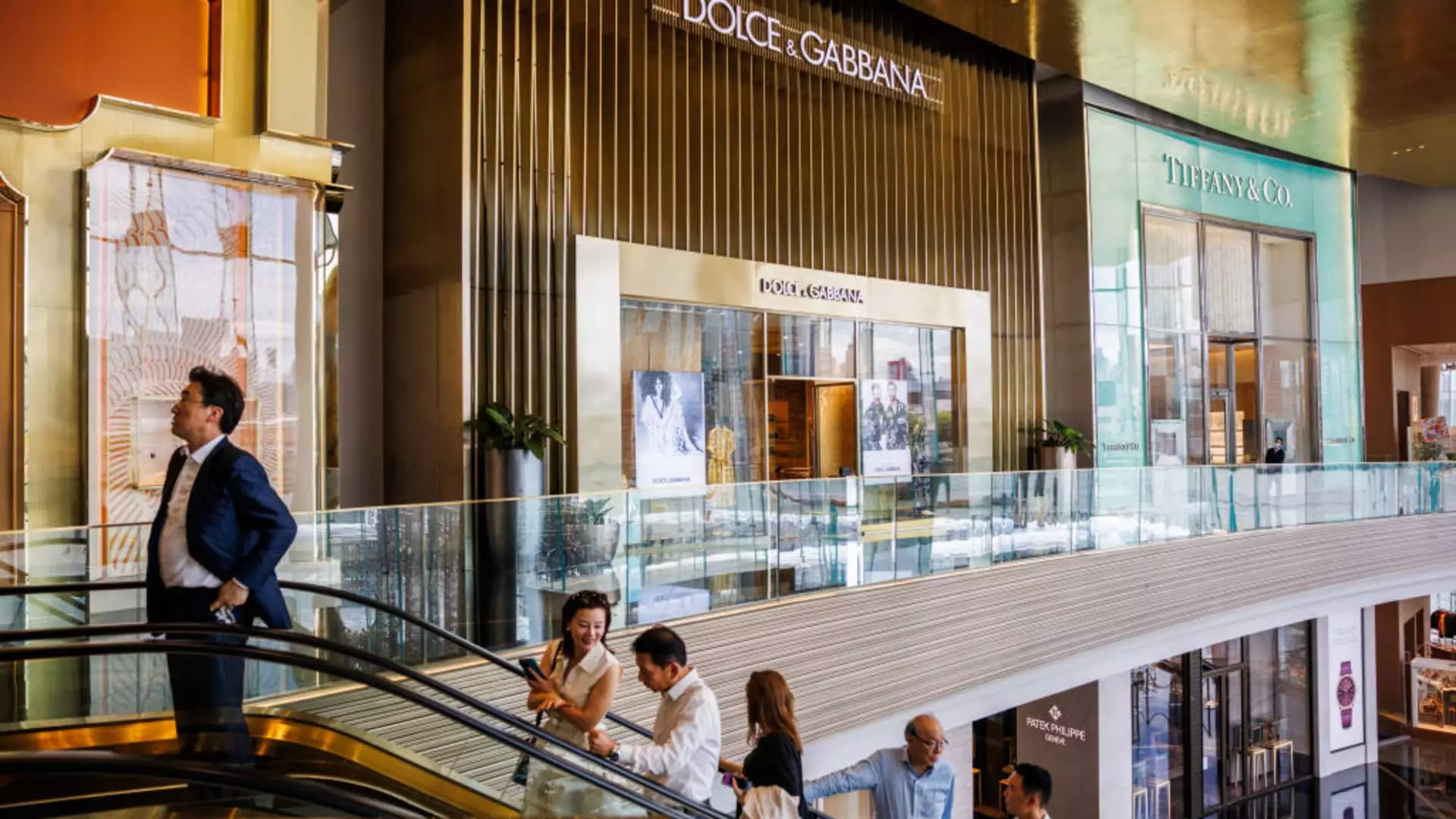The personal luxury goods market, celebrated for its resilience over the past decade and a half, is facing an unforeseen turning point in 2024. With macroeconomic uncertainty looming large and a noticeable deceleration in consumption from China, renowned consulting firm Bain & Company anticipates a contraction in this sector for the first time since the global financial crisis. This shift, marked by evolving consumer behaviors and economic pressures, prompts a critical reassessment of strategies among luxury brands to navigate this turbulent landscape.
As reported by Bain & Company, the current downturn is staggering: the luxury goods sector—which encompasses fashion, accessories, jewelry, and cosmetics—is anticipated to shrink by approximately 2% this year. This trend starkly contrasts with the previous 15 years (excluding the Covid-induced shutdown) marked by robust demand and growth. A myriad of challenges converges to create this scenario, including rising costs, inflationary pressures, and eroding customer loyalty. These factors have driven consumers, particularly in high-end markets, to reconsider their spending habits.
Crucially, a significant contributor to the slowdown is the diminishing consumer confidence in China, a critical market for luxury brands. After a prolonged period of economic disruption triggered by the pandemic, China’s recovery has been slower than anticipated, resulting in reduced domestic spending and weakened demand for luxury products. The recent sales figures from prominent luxury houses like LVMH, Burberry, and Kering indicate that macroeconomic headwinds are manifesting as substantial revenue misses for these brands, further exacerbating the sector’s woes.
What’s unsettling for industry stakeholders is the prevailing trend that extends beyond immediate sales issues; it unveils a notable shift in consumer preferences. As Bain noted, nearly 50 million consumers have either exited the luxury market or have been relegated to the periphery over the last two years. This demographic shift necessitates a reevaluation of luxury brands’ value propositions. Brands must grapple with a consumer landscape that isn’t just fluctuating but is also increasingly defined by younger generations, namely Gen-Z, who seek authenticity and engaging experiences rather than mere transactions.
This generational shift underscores a broader trend: consumers are gravitating towards experiences over products. Luxury travel, exclusive social events, and wellness-focused initiatives are gaining ground as attractive alternatives. Moreover, consumers are opting for “small indulgences,” such as premium beauty items or unique eyewear, instead of splurging on larger goods. This indicates a prudent recalibration of luxury consumption, compelling companies to rethink their traditional offerings.
Despite these challenges, there are potential avenues for growth. Certain segments within the luxury market, such as fine wines, gourmet dining, and high-end automotive products, have exhibited resilience and even modest growth. The hospitality sector, bolstered by luxury travel, stands out as a beacon of hope, reflecting a pivot towards experiential spending among affluent consumers.
Additionally, the luxury markets in Europe and the United States are showing signs of recovery, creating a nuanced landscape where some areas thrive while others falter. Bain’s report suggests that barring significant macroeconomic confrontations, gradual improvement could be anticipated in these regions, offering a glimmer of hope for luxury brand revival.
To reclaim lost ground and re-engage with consumers, luxury brands must innovate and adapt. As Claudia D’Arpizio, a partner at Bain & Company, articulated, fostering deeper connections through creativity and personalized experiences is crucial for appealing to the elusive younger demographic. Brands should focus on building community and conversation around their products, ensuring that they not only reach consumers but resonate with them on a personal level.
Furthermore, sustaining loyalty with existing customers is vital. It requires consistent efforts to surprise and delight, emphasizing human interactions that have become increasingly pivotal in a digitalized world. This transformation, coupled with a keen understanding of shifting consumer behaviors, may not merely be a temporary adjustment but rather a strategic evolution necessary for enduring success in an unpredictable market.
The luxury goods market, while currently facing challenges, is not devoid of potential. The insights from Bain & Company serve as a comprehensive reminder of the complexities inherent in this sector. By strategically addressing consumer shifts and innovating how they connect with their audience, luxury brands have the opportunity to redefine their future, embracing change while staying true to their celebrated heritage.

